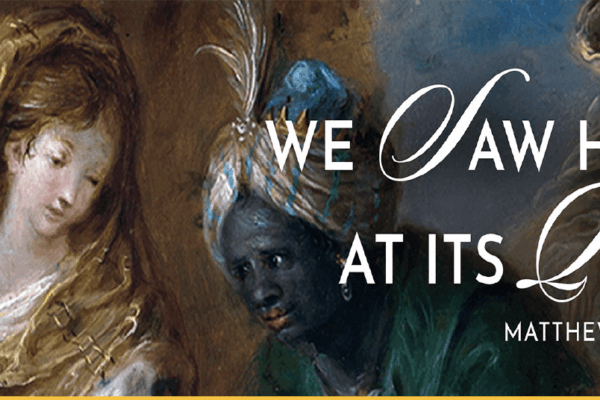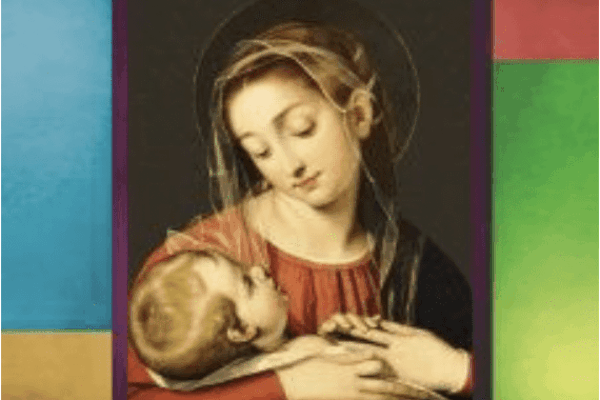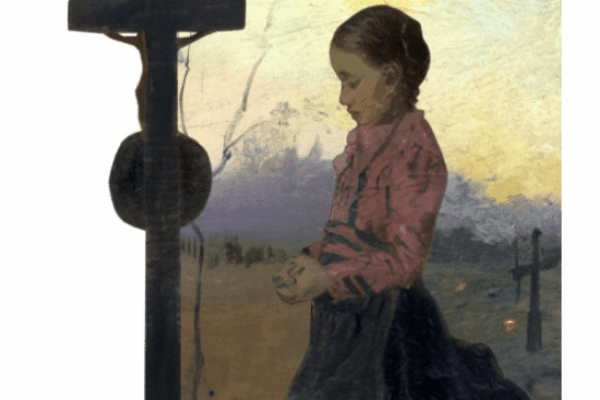Baptism of Our Lord
The Feast of the Baptism of Our Lord
(Last Sunday of the Christmas Season, Mathew 3:13-17, 11 January 2026)
In the Jordan, Heaven Opens not to Condemn: But to Call Humanity ‘Beloved’-Today, the Feast of the Baptism of Jesus, the Gospel (Mathew 3:13-17) describes the scene which occurred at the River Jordan: Jesus, too, is in the midst of the penitent crowd which approaches John the Baptist to receive baptism. He stood in line. John would like to prevent him from [being baptized], saying: I need to be baptized by you (Mathew 3:14). The Baptist, indeed, is aware of the great distance there is between him and Jesus. But Jesus has come precisely to bridge the gap between man and God: if He is completely on God’s side, He is also completely on mankind’s side, and reunites what had been separated. For this reason, he asks John to baptize him, so that all righteousness may be fulfilled (Mathew 3:15), namely, that the plan of God may be fulfilled, the plan which passes by way of obedience and solidarity with fragile and sinful mankind, the way of humility and of God’s full closeness to his children. Because God is very close to us, very close! (Pope Francis, Angelus, 2017)
Beloved Brothers and Sisters in Christ-Today the Church invites us to stand again on the banks of the River Jordan. The waters flow quietly, but something eternal breaks into time. Jesus—God from God, Light from Light—stands in the midst of a crowd of sinners waiting for baptism. He stood in line. The sinless One places Himself among the sinful. The Eternal Word humbles Himself among the broken. The Holy One chooses to be counted among the unholy.
John the Baptist is bewildered: I need to be baptized by you! He senses the infinite distance between humanity and God, between creature and Creator. And yet, Jesus does not step back from humanity—He steps into it. He does not refuse our frailty—He embraces it. He does not preach salvation from a safe distance—He enters the very waters that symbolize repentance, death, purification, and new birth. Why? Jesus answers: So that all righteousness may be fulfilled.
“Standing in Line”-A parish priest once shared an experience from a winter morning at a local homeless shelter. Once a week, the shelter offered free showers and clean clothing. By 6:00 a.m., the line was already long. Men and women wrapped in worn jackets and blankets waited silently in the cold, some ashamed, some tired, all longing for warmth and dignity.
As the priest arrived to help, he noticed something surprising. At the end of the line—quiet, without clerical collar—stood a well-dressed businessman from the parish. This man owned a successful company, served on multiple boards, and lived very comfortably. Yet there he was, patiently waiting among the homeless.
The priest approached him and whispered: You don’t have to stand in line. You can come in through the side entrance. The man smiled gently and replied, Father, if they wait in line, I wait in line. Today I am here with them, not over them. When the doors opened, he entered not to use the shower but to serve. He washed feet. He handed out towels. He spoke with kindness, eye-to-eye, as a brother among brothers. Later the priest asked him why he chose to do that. The man answered: Because Christ didn’t save us from the shore. He stepped into the same water we stand in. If my Lord stands in line with sinners, then I want to stand in line with His people. Just as that man refused privilege in order to be with others, Jesus stood in line at the Jordan. He did not come to shame sinners but to share their burden. He did not appear above humanity — He entered into it. Love is not shouted from a distance. Love draws near. Love stands beside. Love enters the water. And in that nearness, heaven opens.
The Great Descent of God-In philosophical language, God is often described as the Unmoved Mover, the Infinite, the Transcendent. But in Christ, the Infinite bends low. The Unmoved enters motion. The Transcendent becomes immanent. This is not contradiction—it is revelation. God reveals that true greatness does not tower above—it descends in love.
The Baptism of Jesus is the manifestation of divine solidarity. If He is fully God, He is also fully with us—standing shoulder-to-shoulder with humanity in its weakness and pain. This is the God who kneels to wash feet. This is the God who touches lepers. This is the God who eats with sinners. This is the God who dies on a Cross. The Jordan anticipates Calvary. For in both, Christ descends—into water, into death—so that we may rise.
The Bridge Between God and Humanity-Human history is the story of a broken bridge. Since the Fall, there existed a wound between God and man, heaven and earth, grace and nature. Humanity longs for God yet feels distant. We sense what Augustine described: Our hearts are restless until they rest in You.
Jesus enters the Jordan as Pontifex—The Bridge-Builder. He who is nearest to the Father becomes nearest to us. He reunites what had been separated—not abstractly, but personally, bodily, sacramentally. The water that touches Him becomes the sign that God’s love now flows through history.
The Way of Humility: God’s Logic-Jesus does not dominate history from above—He redeems it from within. He does not save us by power alone but by humility. The logic of God overturns the logic of the world. The world says: rise higher to be great. God says: descend lower to love.
The world seeks competition. Christ reveals communion. The world exalts appearance. Christ embraces vulnerability. This is not weakness—it is the power of divine love, capable of entering even our darkness without being overwhelmed.
Humanity Dignified and Reborn-When Jesus steps into the water, something extraordinary happens: heaven opens. The Spirit descends. The Father speaks: This is my beloved Son. This is not merely revelation—it is invitation.
For in baptism, what is spoken over Christ is spoken over us. We are named. We are claimed. We are not accidents of biology—we are beloved children. Christian identity begins not in achievement but in belovedness. And if we are beloved, we must live as those who know they are loved.
Baptized Into Mission-The Baptism of the Lord is not a sentimental memory. It is the beginning of mission. From the waters of the Jordan, Jesus moves outward—to heal, preach, forgive, confront evil, and lift the poor. So too for us. To be baptized is not simply to belong to a Church—it is to belong to Christ’s mission. It means allowing God’s closeness to transform how we live: we stand beside the forgotten, because Christ stood beside us; we refuse indifference, because Christ refused distance and we walk with the weak, because Christ walked with us into the Jordan of our humanity.
God’s Nearness Today-Pope Francis reminds us: God is very close to us. Very close. Not only in lofty theology or distant heavens—but in the ordinary waters of daily life: in the sacramental life of the Church, in the prayer of the poor, in the cry of the suffering, in the quiet courage of fidelity and love.
God’s closeness is not abstract. It is incarnate.
Cumulative Summary –At the Jordan, the sinless Christ freely stands among sinners, entering our frailty so that all righteousness may be fulfilled. In His descent, God reveals true greatness as humility and solidarity—He saves not from afar, but from within our human condition. Heaven opens not to condemn but to declare love: You are my beloved Son—a word that, through baptism, is spoken also over us.
Jesus becomes the Bridge-Builder, reuniting heaven and earth, grace and nature, God and humanity. Baptism is therefore identity and mission: we who are named beloved are sent to carry God’s nearness into the world. The Feast of the Baptism of the Lord proclaims that God is not distant—He has stepped into our waters and stands with us still.
Concluding Words: Entering the Waters Again
Dear Epiphany, the Feast of the Baptism of the Lord invites us to remember: Who Christ is — God-With-Us! Who we are — Beloved children of the Father! What we are sent to do — Carry the nearness of God into the world.
Let us return, spiritually, to our own baptism. Let us reclaim our dignity, our identity, our mission. And let us allow our lives to say to the world what the Jordan said that day: God is not far. He has entered our waters. He stands among us still.
Fraternally,
Fr. John Peter Lazaar SAC, Pastor
The Epiphany of the Lord
To The Family of the Epiphany Parish The Epiphany of the Lord Magnus Deus in Parvulo Latet: The Great God Hides in the Small (Second Sunday after Christmas, Matthew 2:1-12, 04 January 2026) …
Solemnity of Mary, the Holy Mother of God: World Day of Peace
(Holy Day of Obligation, Luke 2: 16-21, Thursday 01 January 2026) Dear Brothers and Sisters of the Epiphany, Today in our calendar is the first day of the Gregorian Year,…
Holy Family
To The Holy Family of the Epiphany ParishThe Holy Family of Jesus, Mary and Joseph(Mathew 2:13-15, 19-23, 28 January 2025)The Holy Family Shows: Holiness is Letting God’s will Rewrite Our…
4th Sunday of Advent
To The Advent Epiphany Community The Angel’s Candle (Love Candle): Peace on Earth, Good Will to Men, (Luke 2:13-14) (Fourth Sunday of Advent, Year A, Mathew 1: 18-24, 21 December 2025) …
3rd Sunday of Advent
To The Advent Epiphany Community The Shepherd’s Candle (The Candle of Joy): Joy at the Soon-Coming of Jesus (Luke 2:10–12) (Third Sunday of Advent: Gaudete Sunday, Matthew 11:2-11, 14 December…
2nd Sunday of Advent
To The Pilgrims of Hope at Epiphany The Bethlehem (Peace) Candle: Mary and Joseph’s Journey from Nazareth to Bethlehem (Luke 2:4-7)(Second Sunday of Advent, Year A, Mathew 3:1-12, 07 December…
First Sunday of Advent: A Season of Hopeful Vigilance
(Isaiah 2:1–5, Romans 13:11–14, Matthew 24:37–44) Dear Parish Family, Today the Church begins a new liturgical year—a fresh journey of faith for the People of God. As always, we set…
Thirty-Third Sunday in Ordinary Time
Thirty Third Sunday ( Malachi 3:19–20A; 2 Thessalonians 3:7–12; Luke 21:5–19) Dear Parish Family, The word Parousia in Greek means “presence” or “coming,” and in Christian theology it refers to…
All Souls Day Homily
Readings: Wisdom 3:1–9; Psalm 23; Romans 5:5–11; John 6:37–40 My dear brothers and sisters in Christ, As we gather today for All Souls Day, we fondly remember our loved ones…

















